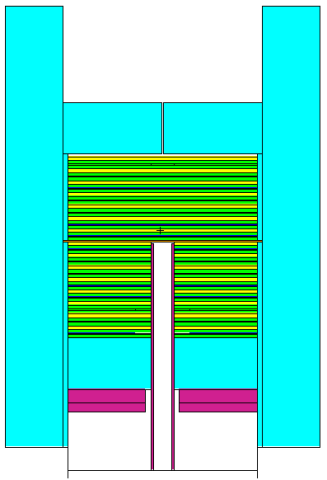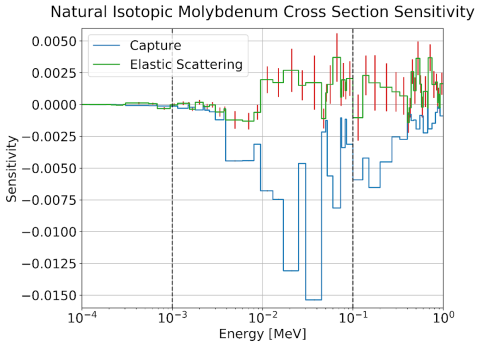Historically, a popular method of validating neutron cross sections has been through measurements with critical experiments that are designed such that their neutron multiplication factor deviates largely from transport calculations if the nuclear data being used in the calculation is inaccurate. For the validation of the intermediate energy molybdenum cross section evaluation, the team was tasked with designing a High-enriched uranium (HEU) critical experiment. The experiment geometry was constrained to the Comet assembly machine owned by Los Alamos, restricting the design to a cylindrical system containing repetitive stacks of HEU fuel, moderator, and molybdenum plates surrounded by a large reflector. To design the experiment, the team developed a novel methodology of using a genetic algorithm - based optimization technique to design three configurations of the experiment, each sensitive to different energy cross sections between 1 and 100 keV. It was required that each configuration of the experiment met all geometric and operational constraints placed on the system, that each design was feasible, and that the entire experiment was within a $500,000 budget.
Team: Nathan Langlitz, Sukhjinder Singh, Adam Ney, Dominik Fritz
Project Advisor: Professor DANON
Project Motivation
Nuclear data is the foundation of nuclear engineering calculations and is utilized in all nuclear engineering disciplines, from reactor modeling and criticality safety to health physics and radiation detection. Because of the inherent safety risks associated with nuclear systems, it is imperative that the nuclear data used in calculations is subject to rigorous validation and verification processes. Measurements of isotopic molybdenum intermediate energy total neutron cross sections, the fundamental reaction probability parameter in nuclear data, were performed at Rensselaer’s Gaerttner Linear Accelerator Facility. This new data evaluation prompted a need for an experiment to validate this new data evaluation, as molybdenum is prevalent in nuclear reactor systems as a high yield fission product and in structural materials. As a result, Los Alamos National Laboratory has collaborated with Rensselaer to design such an experiment.

MCNP model of the MoSES critical assembly.
Project Description
Historically, a popular method of validating neutron cross sections has been through measurements with critical experiments that are designed such that their neutron multiplication factor deviates largely from transport calculations if the nuclear data being used in the calculation is inaccurate. For the validation of the intermediate energy molybdenum cross section evaluation, the team was tasked with designing a High-enriched uranium (HEU) critical experiment. The experiment geometry was constrained to the Comet assembly machine owned by Los Alamos, restricting the design to a cylindrical system containing repetitive stacks of HEU fuel, moderator, and molybdenum plates surrounded by a large reflector. To design the experiment, the team developed a novel methodology of using a genetic algorithm - based optimization technique to design three configurations of the experiment, each sensitive to different energy cross sections between 1 and 100 keV. It was required that each configuration of the experiment met all geometric and operational constraints placed on the system, that each design was feasible, and that the entire experiment was within a $500,000 budget.

Sensitivity profile for MoSES configuration 3.
Results and Accomplishments
The team successfully designed three configurations of the MoSES critical experiment which met all system technical specifications and were highly sensitive to the intermediate energy molybdenum capture and elastic scattering cross sections. Additionally, the application of genetic algorithm optimization developed by the team is a novel method of critical experiment design. The three experiments had sensitivities peaking at 5 keV, 20 keV, and 40 keV with maximum total sensitivity magnitudes of 0.0128, 0.0166, and 0.1908, respectively. Each designed configuration exceeded the target maximum sensitivity of 0.001 by more than a factor of 10. The total cost of the system was estimated conservatively to be $280,000, which is well under budget.